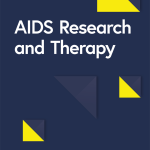Descriptive statistics
From January 2015 to December 2023, the FAERS database documented a total of 44,179 adverse events associated with the treatment of obesity. Following the exclusion of some incomplete data, a total of 8,844 cases were ultimately identified as adverse events related to the digestive system. Among the cohort experiencing dsAEs, 68.83% of female patients with obesity reported encountering these incidents, with a median age (IQR) of 51 (40–61) years and a median weight (IQR) of 93 (80–113) kg, and the majority of reporters were from the United States (56.35%). Table 1 summarizes the baseline characteristics of these reports. We further classified into two subcategories: digestive tract AEs (6731 cases) are nearly six times more prevalent than glandular AEs (1015 cases). However, both were reported by obese females with a higher incidence of AEs (69.22% and 64.63%), with similar median ages (52 and 50 years) and median weights of 93 kg. Reporters of digestive tract AEs are primarily from the United States (59.83%), whereas reporters of glandular AEs are more geographically dispersed in other countries (65.32%). Finally, detailed baseline data of the digestive tract, digestive glands, and digestive organs are presented in Table S1.
The top three AOMs with the highest reported dsAEs are bupropion-naltrexone (31.65%), orlistat (22.51%), and liraglutide (17.23%) and the most common sea is nausea (1,658, 18.75%), followed by vomiting (8.53%) and diarrhea (8.21%). The three drugs most frequently reported for gastrointestinal AEs are bupropion-naltrexone (34.90%), orlistat (23.70%), and semaglutide (15.57%), the most frequently occurring gastrointestinal AEs were consistent with the above. On the other hand, the drug most frequently reported for glandular digestive system adverse events is liraglutide (33.30%), followed by semaglutide (26.90%), and then orlistat and bupropion-naltrexone (10.94%). The reported rates of glandular adverse events are Cholelithiasis (11.72%), Pancreatitis (11.63%), and Hepatic enzyme increased (5.42%). The top 10 most common adverse events are shown in Figs. 1 and S1. The most common AOMs varied in different digestive organs, with bupropion-naltrexone being the most common in the orofacial and gastrointestinal regions (62.24% and 33.34%), and liraglutide being the most common in the hepatobiliary and pancreatic regions (28.96% and 48.12%).
Top 10 most reported number of digestive adverse events. The bar plot shows statistics for the top 10 reported adverse events for the digestive system (orange), digestive tract (blue), and digestive glands (green). The colors indicate the corresponding categories of adverse events. Percentage values labeled in the figure represent the proportion of cases of that adverse event that occurred in obese patients taking anti-obesity medications out of the total number of cases of that category of adverse events
Disproportionate analysis
In the disproportionate analysis, Initially, we studied dsAEs among 7 AOMs (Table 2). The results revealed PV signals for dsAEs in semaglutide (PRR = 1.28, 95% CI: 1.23–1.34; χ2 = 105.07; ROR = 1.41, 95% CI: 1.32–1.51; IC = 0.30, IC025 = 0.22), liraglutide (PRR = 1.45, 95% CI: 1.39–1.52; χ2 = 238.37; ROR = 1.7, 95% CI: 1.59–1.82; IC = 0.46, IC025 = 0.37), and orlistat (PRR = 2.12, 95% CI: 2.04–2.21; χ2 = 1234.07; ROR = 3.16, 95% CI: 2.96–3.38; IC = 0.90, IC025 = 0.83), whereas no PV signals were detected in other AOMs. We further detected PV signals in the digestive tracts and glands and found that PV signals were detected in both the tract and glands for semaglutide and liraglutide, but orlistat (PRR = 2.27, 95% CI: 2.17–2.38; χ2 = 1074.64; ROR = 3.07, 95% CI: 2.86–3.29; IC = 0.98, IC025 = 0.89) exhibited PV signal only in the tract. Intriguingly, we found PV signals in the glands for Phentermine-topiramate (PRR = 5.33, 95% CI: 3.28–8.66; χ2 = 50.06; ROR = 6.13, 95% CI: 3.45–10.88; IC = 2.20, IC025 = 1.30). As to the digestive organ (Table S2), only bupropion-naltrexone (PRR = 2.93, 95% CI: 2.39–3.59; χ2 = 118.65; ROR = 2.97, 95% CI: 2.42–3.65; IC = 0.79, IC025 = 0.58) exhibited a PV signal in mouth & lip-related AEs. PV signals for gastrointestinal AEs were detected in semaglutide, liraglutide, and orlistat, while PV signals for hepatobiliary AEs were detected in semaglutide, liraglutide, and phentermine-topiramate. Finally, we performed a detailed analysis of the pancreas and detected PV signals in semaglutide and liraglutide, which is consistent with non-lethal pancreatitis. These findings suggest that, in comparison to other investigated AOMs, semaglutide and liraglutide exhibit a stronger correlation with overall dsAEs, orlistat is more closely correlated with gastrointestinal AEs, and phentermine-topiramate shows a higher correlation with glandular AEs, particularly in hepatobiliary events.
Percentages of digestive adverse events in all adverse events caused by AOMs
Concerning the overall digestive system, orlistat exhibited a significant increase in AEs, whereas phentermine demonstrated a noteworthy decrease in AEs when compared to the other AOMs. Semaglutide (OR = 0.85, 95% CI: 0.76–0.94) and tirzepatide (OR = 0.57, 95% CI: 0.45–0.74) exhibited a significantly lower incidence of dsAEs compared to liraglutide, and tirzepatide (OR = 0.68, 95% CI: 0.53–0.87) also demonstrated a significant reduction compared to semaglutide. Additionally, the combination therapy of phentermine-topiramate (OR = 1.98, 95% CI: 1.06–3.71) significantly increases compared to phentermine monotherapy (Fig. 2a). Focusing further on the digestive tract and glands, there were no statistically differences in digestive tract AEs among the three drugs, but semaglutide (OR = 5.22,95% CI: 2.13–12.75) and liraglutide (OR = 6.37,95% CI: 2.6–15.54) digestive gland AEs were significantly increased compared to tirzepatide. Compared to phentermine alone, phentermine-topiramate (OR = 13.99, 95% CI: 4.81–40.65) combination was significantly increased in the gland (Fig. 2b). Surprisingly, phentermine-topiramate shows a significant increase in hepatobiliary AEs compared to the others. Additionally, in the pancreas, AEs with liraglutide are significantly higher than semaglutide and tirzepatide, but there is no statistical difference between semaglutide and tirzepatide (Fig. S2).
Comparison of the percentages of digestive adverse events and reporting rate of severe adverse events caused by anti-obesity medications. (a) Percentages of digestive system adverse events. (b) Percentages of digestive tract adverse events (upper right) and percentages of digestive glands adverse events (lower left). (c) Reporting rate of severe digestive system adverse events. (d) Reporting rate of severe digestive tract adverse events and incidence of severe digestive gland adverse events. Odds ratio for percentages of adverse events and Incidence of severe adverse events. Numbers in parentheses indicate 95% credible intervals (95% CrIs). Relatively dark colors represent OR > 1, relatively light colors represent OR < 1, and no color indicates no statistical significance. (c) and (d) are adjusted for age and gender. All tables are in alphabetical order, but liraglutide, semaglutide and tirzepatide are listed together for ease of comparison
Reporting rate of severe digestive adverse events between AOMs
Throughout the digestive system, semaglutide (OR = 22.02, 95% CI: 11.23–43.1) and liraglutide (OR = 19.74, 95% CI: 10.11–38.56) had significantly higher rates of SAEs compared with tirzepatide, but there was no statistical difference between semaglutide and liraglutide. Meanwhile, there was also no statistical difference in the incidence of SAEs in the digestive system with the phentermine-topiramate combination compared to phentermine alone (Fig. 2c).
Whether in the digestive tract or glands, the incidence of SAEs is significantly increased for semaglutide and liraglutide compared to tirzepatide. However, there is no statistical difference in the digestive tract between semaglutide and liraglutide, while in the digestive glands, semaglutide (OR = 4.86, 95% CI: 1.05–22.51) significantly elevates the reporting rate of SAEs compared to liraglutide (Fig. 2d).
Subsequently, through multifactorial logistic regression analysis, we found that the occurrence rate of SAEs in the tract for the other five weight-loss drugs was significantly lower than that in the glands, except for phentermine-topiramate and phentermine, for which statistics were not available (Table S3). Then, tirzepatide only had a significantly lower reporting rate of SAEs in the gastrointestinal tract than the others (Fig. S3). Overall, among the studied drugs, the incidence of SAEs in the digestive tract is significantly lower than in the digestive glands, with tirzepatide having the lowest incidence, particularly in the gastrointestinal tract.
Severity of digestive adverse events reaction outcome between AOMs
Statistical analyzes revealed no statistically significant difference in the risk of severe reaction outcomes in the digestive system among liraglutide, semaglutide and tirzepatide, but in the digestive glands there was a significantly increased risk of a more severe reaction outcome with liraglutide (OR = 1.86, 95% CI: 1.28–2.71) than with semaglutide. Similar results were found only in the hepatobiliary, where liraglutide (OR = 2.43, 95% CI: 1.55–3.82) resulted in a significantly higher risk of more serious hepatobiliary adverse reaction outcomes, and there was no statistical difference between the two in any of the other digestive organs. Remarkably, phentermine-topiramate combination therapy and phentermine monotherapy showed no statistically significant difference in the entire digestive system and the digestive tract, but phentermine-topiramate (OR = 0.06, 95% CI: 0.003–0.79) exhibited a significantly reduced risk of more severe reaction outcomes compared to phentermine in the digestive gland. (Fig. S4)







Add Comment